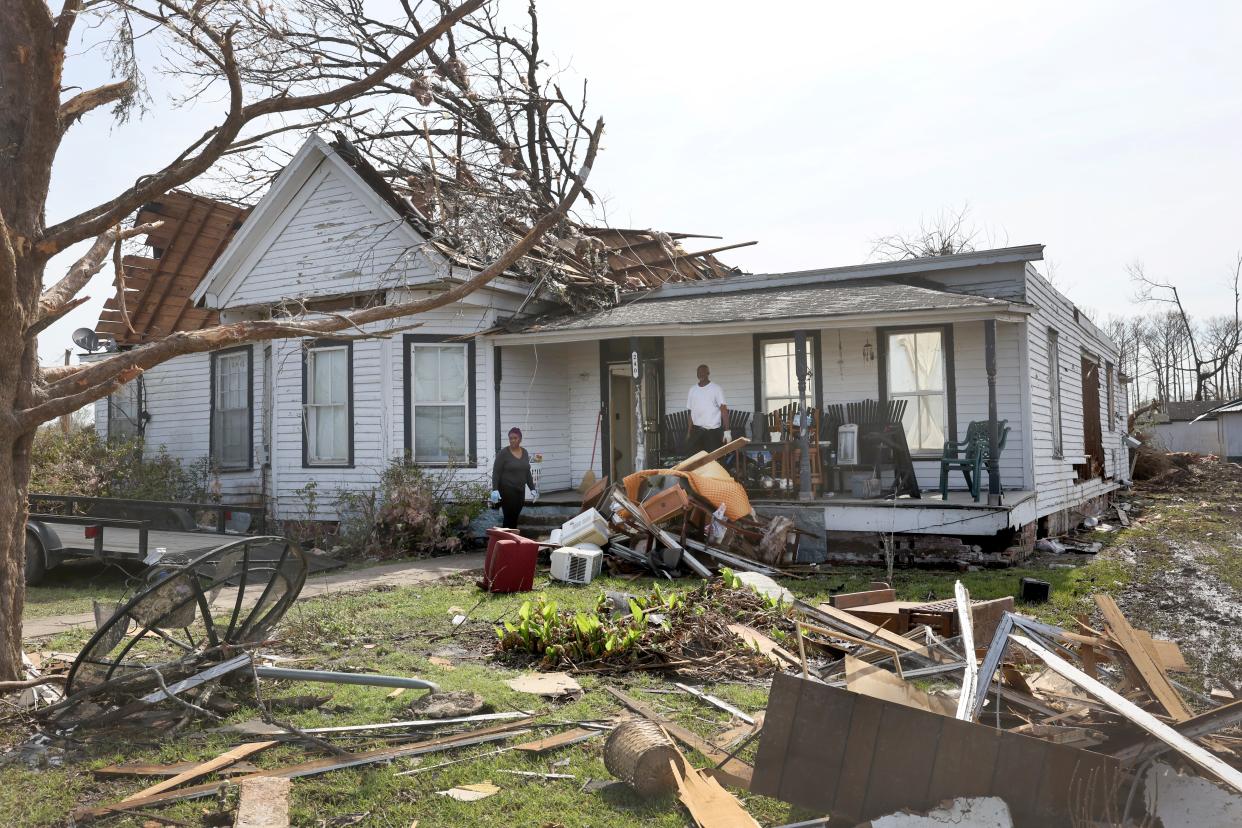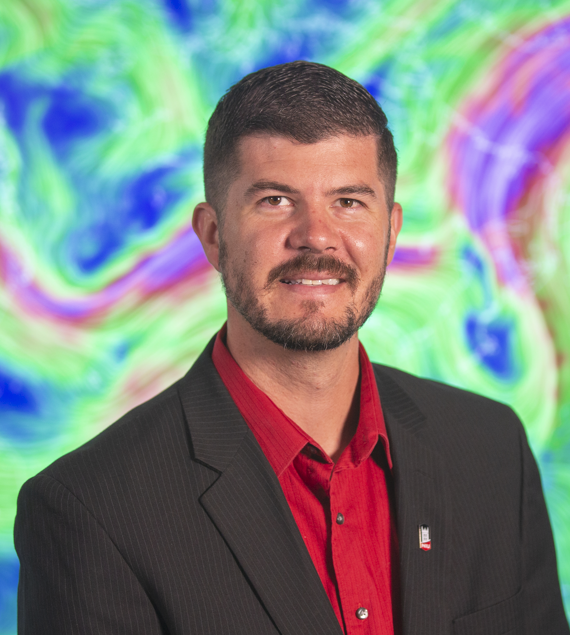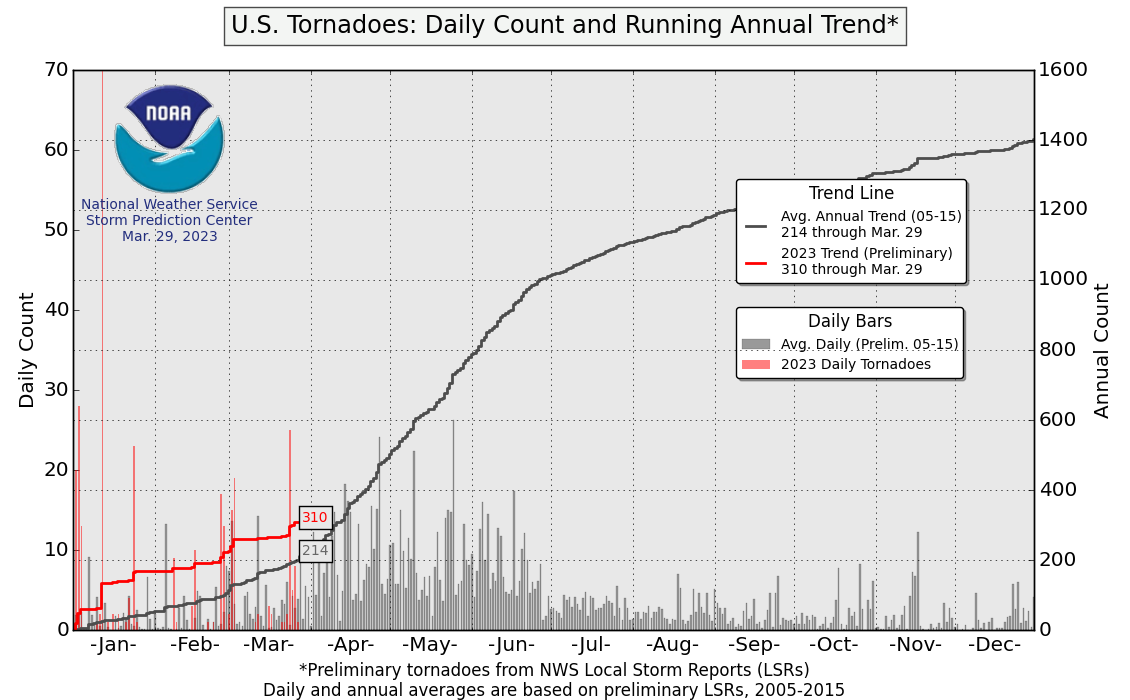|
|
Amid a year that has already seen hundreds of tornadoes and dozens of deaths, even more tornadoes like the ones that tore through Arkansas and Illinois on Friday are expected soon.
Even before Friday's outbreak, there had been more than 300 tornadoes so far, and according to Storm Prediction Center data, it was the third-most-active start to a year on record in the U.S. In late March, a devastating outbreak in the South killed more than 20 people in Mississippi and Alabama and followed several previous outbreaks.
“We should be at about 200 tornadoes for today's date,” Victor Gensini, associate professor at Northern Illinois University, told USA TODAY on March 30. “So we're running about 100 tornadoes above average, and we have been the entire year."
Tornado warning: Twisters hitting more frequently and dealing more deaths in the South
Tornado activity is expanding: Southern states see more twisters than ever

A low pressure system moving in from the west, with warm dry air behind it and warm, humid air flowing northward to the east from the Gulf of Mexico created a classic set up for severe storms and tornadoes.
Severe storms began forming by late morning, forcing the National Weather Service to issue its first "high risk" warning of the year.
At least three tornadoes were confirmed by mid-afternoon, in addition to damaging high winds and huge hail.
A similar pattern is expected to set up Tuesday, amplified by greater heat and humidity, increasing the risk for severe weather, Gensini said.
The mid-Mississippi Valley – particularly parts of Iowa, Illinois and Missouri – could bear the brunt of widespread and likely significant storms Tuesday, the Storm Prediction Center forecasted Saturday.
If you wanted to draw a textbook severe weather configuration, “this would certainly be it,” Gensini said.
A “powerhouse jet stream” moving in from the Plains was moving Friday's storms at highway speeds, and a similar effect is expected Tuesday. Those kinds of high winds tend to increase the risk for twisters that stay on the ground for a long time, such as the March 24 tornado that devastated Rolling Fork, Mississippi.
It's crucial for residents to pay close attention to local meteorologists and to have a way to receive timely weather warnings, especially since many tornadoes occur at night.
In late March, Gensini was among forecasters concerned about a severe weather outbreak the weekend of April 8-9, but federal forecasters now have low confidence in a threat for organized severe storms.
By the start of April, the Storm Prediction Center’s outlook for that weekend showed an “unlikely” – less than 15% – chance of a regional outbreak.
A step above a tornado warning, issued by the National Weather Service in “exceedingly rare” situations, when:
A severe threat to human life or catastrophic damage is imminent or ongoing.
Visual or radar evidence such as a reliable source confirms a tornado or a radar picks up the signature of a ball of debris inside the tornado.
Before-and-after the tornadoes: Maps and satellite images show aftermath in Mississippi, Alabama
The large-scale weather pattern has been very favorable for tornadoes, said Matt Elliott, meteorologist-in-charge at the Storm Prediction Center. He added the fading La Niña has been a major factor.
Gensini agreed, noting even though we’re no longer officially in a La Niña, “the atmosphere is kind of still feeling the effects of the La Niña with this very active storm track. We’ve had this very active storm track where every few days we see one of these big upper-level lows.”
La Niña, a natural climate pattern marked by cooler-than-average sea water in the central Pacific Ocean, affects weather in the U.S. and around the world.
Elliott said that the top five most active tornado seasons on record in the U.S. have all been during La Niñas.
Another factor has been the unusually warm water temperatures in the Gulf of Mexico, which have been 2-4 degrees Celsius warmer than average, Gensini said.
Calling it “bath water,” he said the Gulf provides the moisture, heat and energy that’s needed for severe thunderstorms to form.

It’s too soon to say for sure, said Harold Brooks with NOAA’s National Severe Storms Laboratory. But with the severe weather shaping up over the next 10 days, chances may be increasing.

“A busy first three months of the year doesn’t always mean the rest of the year will have above normal tornado activity,” Brooks said.
In 2021, the year started as one of the busiest on record, above normal through March 2. Then, other than one two-day outbreak in April, “things shut down.” In 2003, the reverse was true, he said. “We were way below normal on the 2nd of May and by the 10th of May, we were way above normal.”
However, Brooks said, if you’re well above normal by the end of April, the year will generally be above normal as a whole.
.oembed-frame {width:100%;height:100%;margin:0;border:0;}
This article originally appeared on USA TODAY: Tornadoes have ravaged the US: Why so many tornadoes in 2023?

A freight train derailed near Paradise, Montana, on Sunday in the latest of a string of rail incidents in the United States, officials said.
Around 25 cars derailed at around 9 a.m. near Paradise, the Plains-Paradise Rural Fire District said in a statement.
The fire department said there was “no current threat to public safety and no hazardous materials being released.”
In photos, some of the cars could be seen falling into a river, with products spilling out.
The fire department said the railcars that reached the river were either empty or carrying Coors Light and Blue Moon beer products. It said the products were “secured in the derailment area” and were not “floating down the river.”
Guests staying at waterfront cabins near where the derailment unfolded were evacuated from the residences as a precaution, the fire department said.
Montana Rail Link said the train had been traveling westbound when it derailed. It said there were "no injuries, no risk to public safety and no Hazmat release.""The cause of the derailment is currently under investigation with MRL personnel and first responders," it said.
The rail company said it was "committed to addressing any impacts to the area as a result of this accident, prioritizing the safety of our employees and the public, and understanding the reasons for this incident.”
It comes after a series of train derailments in the U.S., including the February derailment of a Norfolk Southern Railway train in Ohio, which prompted widespread concern after toxic chemicals were released into the area to avoid a possible explosion.
The incident sparked major backlash in East Palestine, including a number of lawsuits alleging that the controlled release of toxic chemicals imperiled the health of residents, with some reporting symptoms including lingering coughs and chest pain.
On Thursday, the federal government filed a lawsuit against Norfolk Southern, blaming the freight carrier for the train derailment and subsequent release of toxic chemicals.
The U.S. Department of Justice, acting on behalf of the Environmental Protection Agency, filed the civil complaint two weeks after the state of Ohio took similar action against the rail company.
In the weeks since the Feb. 3 derailment, a number of train derailments have occurred across the country, deepening concerns about rail safety in the U.S.